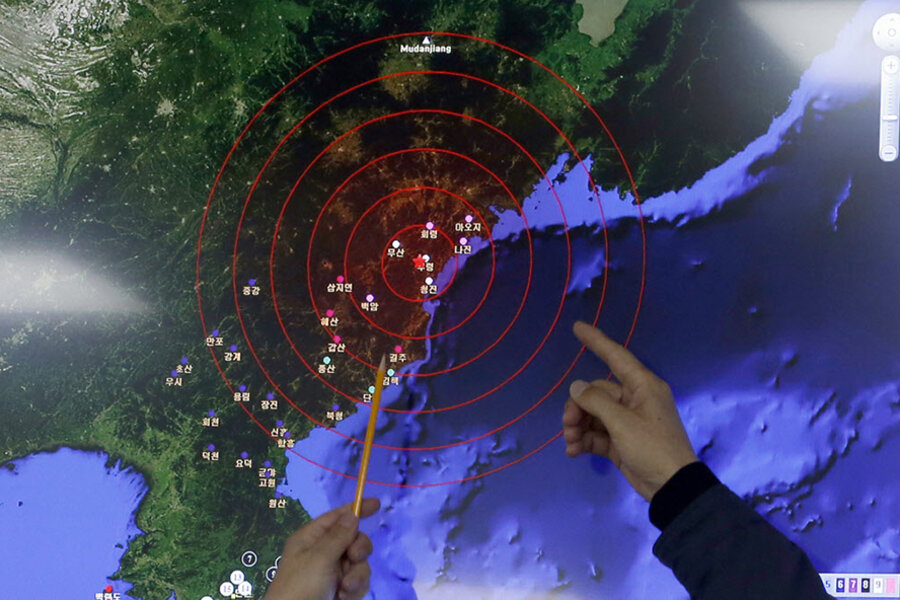How an EU radar satellite shed light on North Korea's nuclear test
Loading...
Using images taken from a European radar satellite, researchers have learned more about how the ground shifted following North Korea’s mysterious nuclear test in January, the BBC reports.
The images may help shed more light on the test, which North Korean media has said was an underground detonation of a hydrogen bomb on Jan. 6, though whether the it was actually a hydrogen bomb hasn’t been independently confirmed.
An analysis of data from the spacecraft Sentinel 1-a shows that rock above the blast zone of the bomb shifted downward by up to 7 centimeters in one area.
In another area, the rock rose 2 to 3 centimeters, researchers from Germany’s Institute for Geosciences and Natural Resources (BGR) found.
The agency works to advise Germany’s government on issues related to the Comprehensive Nuclear-Test-Ban Treaty, to which North Korea isn’t a signatory.
“This is a very important result because in the past the location of nuclear tests was based only on seismological data and now we have an indication from other technologies,” Nicolai Gestermann, a geophysicist at BGR told the BBC. He presented the research at the European Geosciences Union General Assembly, held this week in Vienna.
Typically, researchers can pinpoint the location of a test using data from a network of international seismometers, which can even help identify whether an atomic fission bomb or a more powerful hydrogen bomb has been detonated.
But the radar images refine this analysis further, by determining how the surface has been impacted by an explosion.
The observations are made possible by a technique called interferometry, which finds the difference between “before” and “after” radar images of the Earth’s surface, the BBC reports.
“Using satellite observations prior to and after an event, it is possible to detect human activities in the area, or the absence of such activities,” write Ola Dahlman, Jenifer Mackby, and Svein Mykkeltveit in a 2011 book that looks at how countries can determine whether others are in compliance with the nuclear treaty.
Previously, a team of researchers used similar analysis to examine more about how a series of underground nuclear tests conducted by the US government impacted the surface of a test site in Nevada.
They were able to examine data from tests conducted in 1992, but used only “after” images of previous tests dating back decades because that year was also the first year data from the European Space Agency’s ERS-1 radar satellite was available, they wrote in a 2003 paper.
North Korea’s tests, including those in 2006, 2009, and 2013, are believed to have occurred at a site called Punnggye-ri, sometimes known as P’unggye-yok in a remote part of the country’s east near a town called Kilju.
The bomb test in January, which seismologists say had a magnitude of 5.1, also may not be a thermonuclear blast, as the North claimed. The researchers suggest that it shares many characteristics with a 2013 test, which scientists have said could also be a conventional bomb blast designed to mimic a nuclear test.
The estimated yield of the January test was 10 kilotons of TNT-equivalent, Dr. Gestermann of the BGR told the BBC.
The Sentinel satellite revealed the effects of both subsidence, or sinking or caving, as well as uplift of the rock’s surface following the blast.
But it’s also limited to a 12-day delay in observing the site, having visited once on Jan. 1, before the explosion, and again on Jan. 13, the BBC reports.
That delay means that researchers can’t say precisely when the deformation occurred. But a second satellite, the Sentinel 1-B, which features a 6-day delay in retrieving images, is set to launch on Friday.







